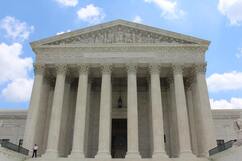
This case is of particular interest because it could be used to determine if any state law, such as Ohio’s Heartbeat law, permits a state to regulate or ban abortion before a baby can survive outside of the womb. At least twelve other states (Alabama, Arkansas, Georgia, Kentucky, Louisiana, Montana, Missouri, Ohio, Oklahoma, South Carolina, Utah and Tennessee) have passed restrictions and prohibitions on abortion before viability. The Mississippi law was blocked from taking effect by the 5th Circuit Court of Appeals, which is among the most conservative-leaning courts in the nation, which held it would go against the current precedent. In 2016, the US Supreme Court let stand similar rulings on 12 week and 5 week abortion bans and also struck down a Texas law on health and safety regulations, arguing that they had the effect of limiting abortions. That the Court is taking up this case is significant.
Since 2016, the makeup of the Court has dramatically changed, with what is perceived as a 6-3 split between more conservative and more liberal jurists. The case is not necessarily a “slam-dunk” though, as Chief Justice Roberts has surprised many with his decisions supporting precedent on abortion and other issues that generally are politically opposed by more conservative voices. Legal observers note that this is at least the second time in the past few weeks that the Supreme Court has indicated a willingness to take up a case that challenges precedent.
When speaking to the early leaders of the pro-life movement, you get the sense that most of them saw Roe as something that would be overturned in short order, either through the courts or through efforts to abolish abortion through efforts like the Human Life Amendment. At the same time, however, abortion advocates were pushing state-level ratification of the ERA, which many believe would enshrine abortion rights in the US Constitution.
When we talk about the Human Life Amendment (HLA), most people are familiar with the concept of an amendment to the US Constitution to protect Human Life, which was endorsed by the U.S. Catholic Bishops and others. Most do not realize that there were actually several versions of a HLA introduced. They include the Hogan, Whitehurst, and Burke Amendments of 1973, the Scott Amendment of 1975, the Paramount Amendment of 1979, the Hatch Amendment of 1981, and the Hatch-Eagleton Act of 1983. The provisions varied between returning abortion to a state-decision and declaring the personhood of the unborn child, and they had bipartisan sponsors and support over the years. The only version of the Human Life Amendment to reach a formal floor vote was the Hatch-Eagleton Amendment, which received 49 supporting votes in the Senate on June 28, 1983, falling 18 votes short of the 67 required for passage. Attempts to change the Constitution were not the only proposals that sought to end abortion-on-demand in the United States. This does not take into account the hundreds of provisions introduced in Congress or the States to overturn and restrict Roe.
In recent years, there has been a widespread effort to establish a legal and political strategy that would incrementally restrict abortion as part of a strategic effort to immediately reduce the number of babies who die each day by abortion while also laying the groundwork for Roe to be overturned and/or abortion to be abolished. For many of them, the Court’s announcement that it would accept the Mississippi case was a major step forward in that effort. It is an effort that has not been without vocal opposition, not only from the anticipated crowd of abortion supporters and advocates, but even from within pro-life circles. In recent years, there has been no small amount of internecine squabbles about strategy – both in timing (on bills such as the heartbeat bill) and on larger strategic issues (such as incrementalism vs outright bans).
Even with the presumed 6-3 majority, it is not going to be a slam-dunk of a court case. In a sense, we have very few clues about the willingness of the Court under its current makeup to take on a case with major precedent implications. This is not the time to celebrate. If anything, it is the time to work harder and pray harder. It is the time to be on the sidewalk – prayerfully and peacefully. It is also a time to continue reaching out to those who do not share our pro-life views and those who have different methods of proclaiming the Gospel of Life.
The U.S. is probably more divided than ever on the issue of abortion, and abortion advocates continue to be more and more radicalized. We need only to look at what happened in Columbus on January 22nd to see an example of this. Throughout the world, in the places where abortion is broadly legal, most countries limit abortion at 12 weeks. The United States is one of only seven countries where abortion is legal through all nine months of pregnancy (we are joined by China, North Korea, Vietnam, Canada, Singapore, and the Netherlands, and the latter two greatly restrict abortion to fetal and maternal health after 24 weeks).
The announcement that the Court would take up the case means that it most likely will hear oral arguments in the fall with decisions most likely to come out in the spring or early summer of ’22.
Bonus: In another disappointing announcement from the White House, President Biden’s press secretary responded to the news that the Court would be considering the Mississippi case by reiterating President Biden’s commitment to codifying Roe v Wade as federal law. The Biden Administration’s continued assault on the right to life comes even as there is discussion among Catholic Bishops as to how to handle communion for politicians who claim to be Catholic but advocate for expansions of abortion. The Pillar recently provided some analysis on this matter.
 RSS Feed
RSS Feed
